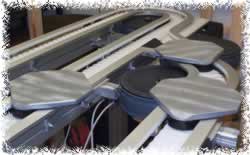

Exclusion criteria were prior history of Raynaud’s syndrome, mastectomy or arm/hand abnormality which precludes from blood pressure measurement.

Inclusion criteria were age 40 years or older and SHS exposure for at least one year while working on the aircrafts. Current or prior FAs who previously enrolled in the FAMRI “Cardiopulmonary Effects of Second Hand Smoke on Flight Attendants” study were contacted for the vascular study. This study was conducted at Cedars-Sinai Medical Center, Los Angeles, and the Flight Attendant Medical Research Institute (FAMRI) Bland Lane Center at UCSF, San Francisco. To assess the effects of remote occupational SHS exposure on vascular aging, we tested arterial stiffness and endothelial dysfunction in a group of FA’s with history of remote, in-cabin SHS exposure. 14– 16 However, whether remote occupational SHS leads to chronic abnormalities in vascular compliance and endothelial function (25 years later) is unknown. In addition, active SHS exposure acutely impairs endothelial function in young healthy nonsmokers.

8– 11 Active smoking leads to an acutely increased arterial stiffness and higher aortic systolic blood pressure, due to smoking-induced reduced pulse pressure amplification and increased arterial wave reflection 12, and a prior investigation of FAs found an association between occupational SHS exposure and systemic hypertension 13. 4 Although active secondhand smoke (SHS) exposure is known to be associated with increased risk of myocardial infarctions and cardiovascular death by 25–30% 5– 7, there is limited data linking remote SHS exposure to future cardiovascular events.Īctive SHS exposure has previously been found to have deleterious effects on cardiovascular predictors such as blood pressure, arterial compliance and endothelial function. Prior to the institution of smoking bans on domestic and international flights from 1988 to 1995, FAs were exposed to a significant amount of SHS, approximately 14-fold the SHS of an average person. FAs generally have a lower prevalence of cardiovascular risk factors including hypertension, diabetes, and high cholesterol when compared to an age- and smoking history- matched population from NHANES 3, which suggests that mechanisms beyond traditional cardiovascular risk factors may be involved in the increased cardiovascular risk of FAs. 2 The reasons for this increased cardiovascular risk in FAs who were working in the early 2000s are not well understood but point to a temporal relationship. Compared to the general population, female flight attendants (FAs) have a 3.5-fold increase in cardiovascular disease, as demonstrated by a survey of domestic flight attendants in 2007 1 but this increased risk was no longer seen in a contemporary cohort of active flight attendants in 2014.


 0 kommentar(er)
0 kommentar(er)
